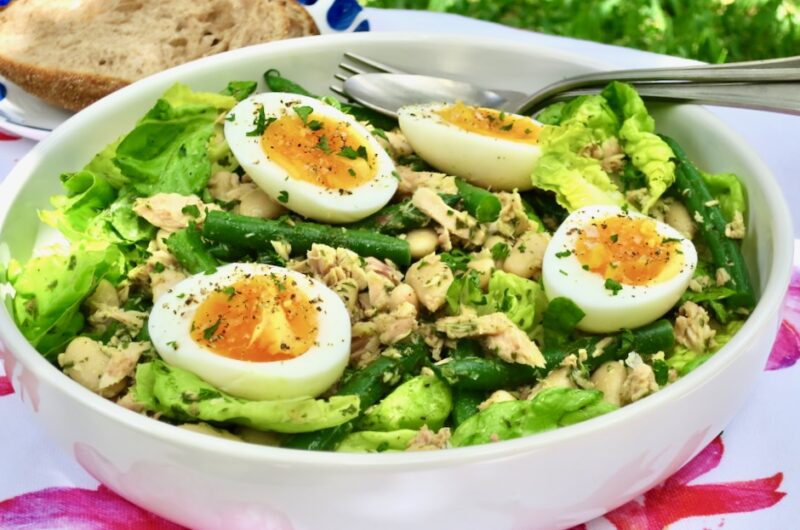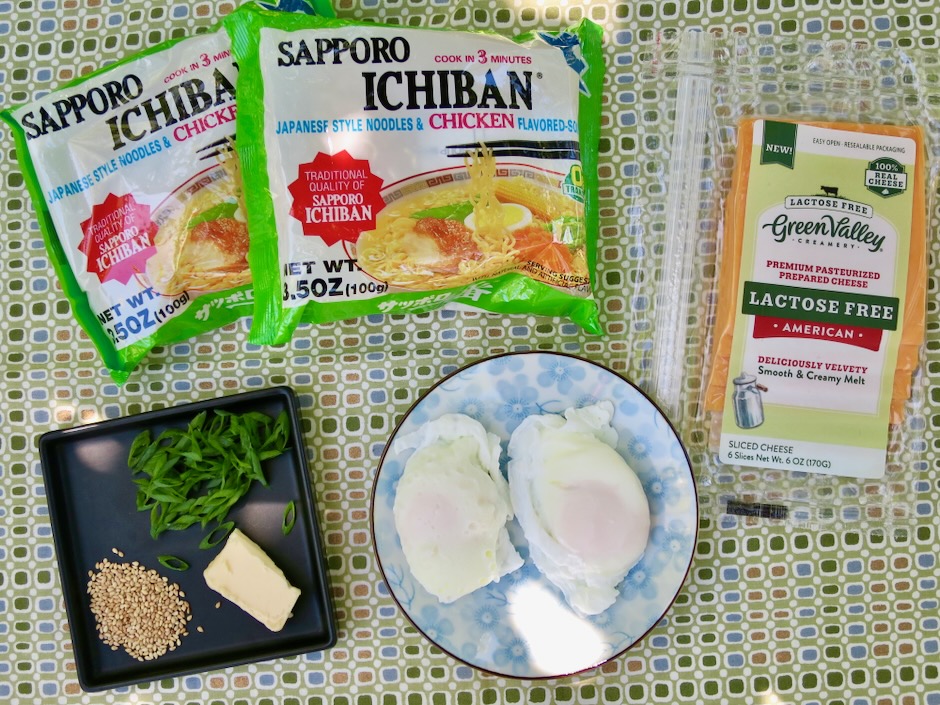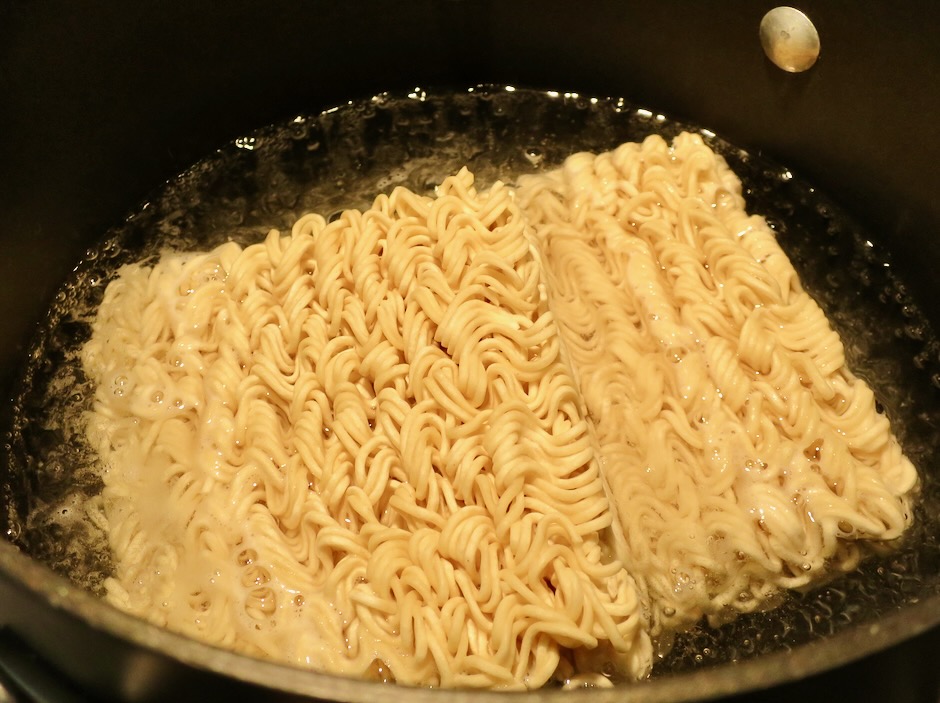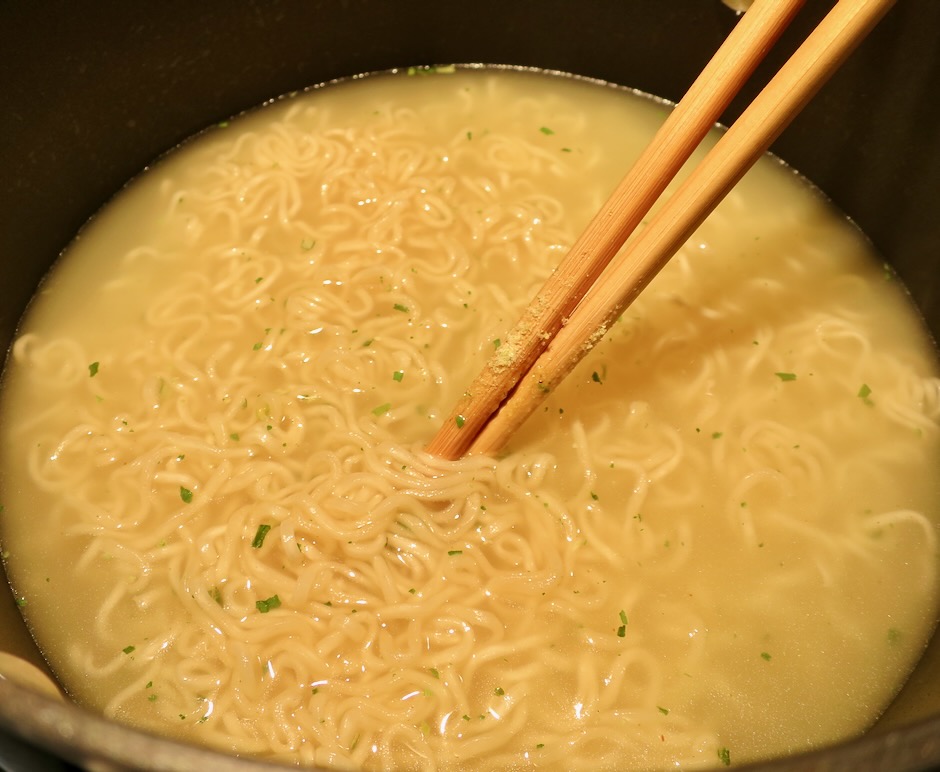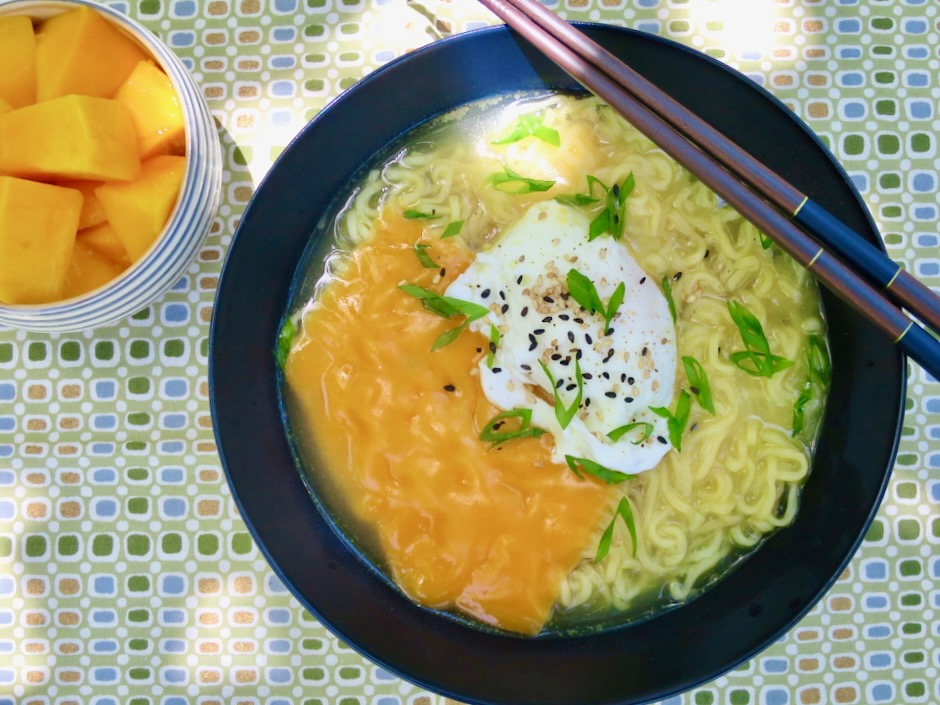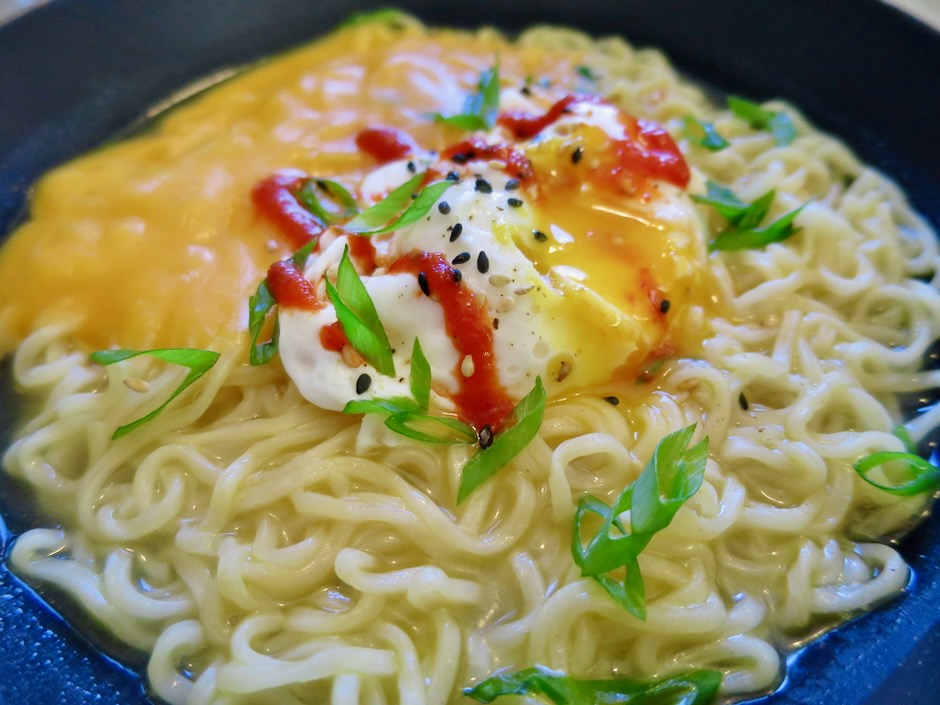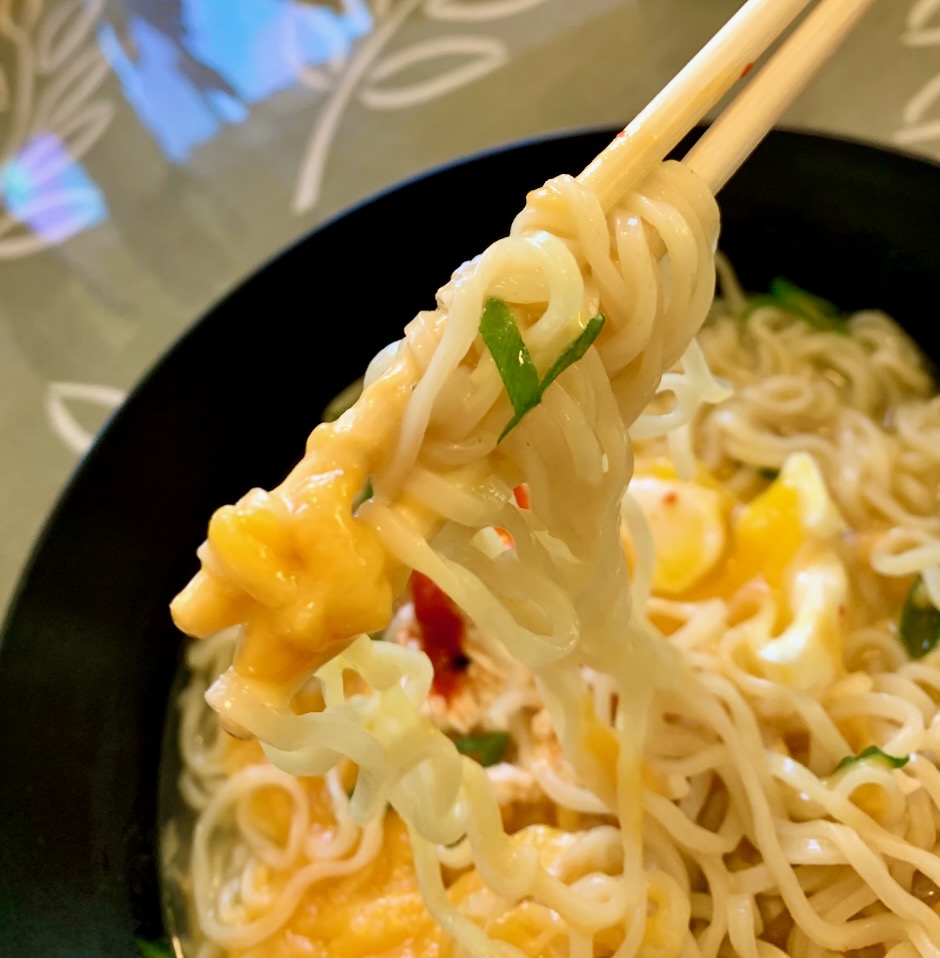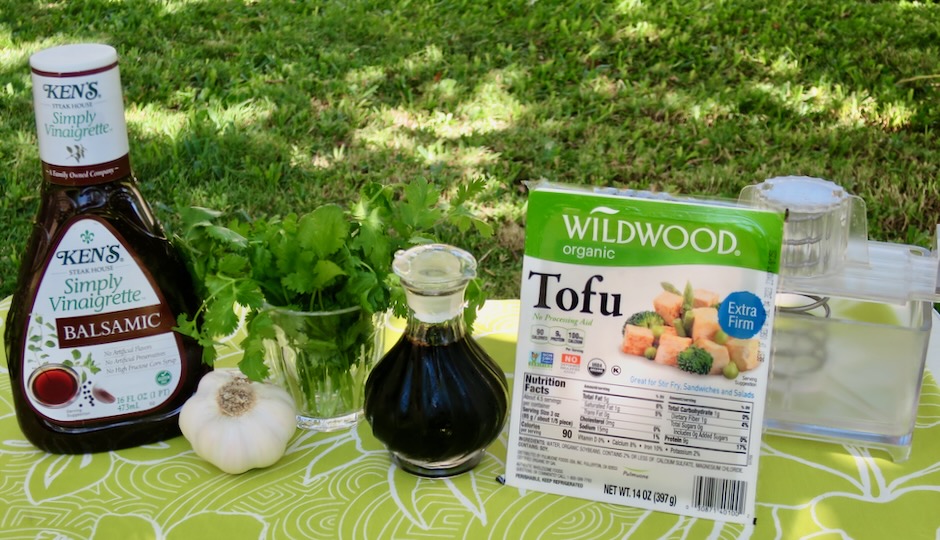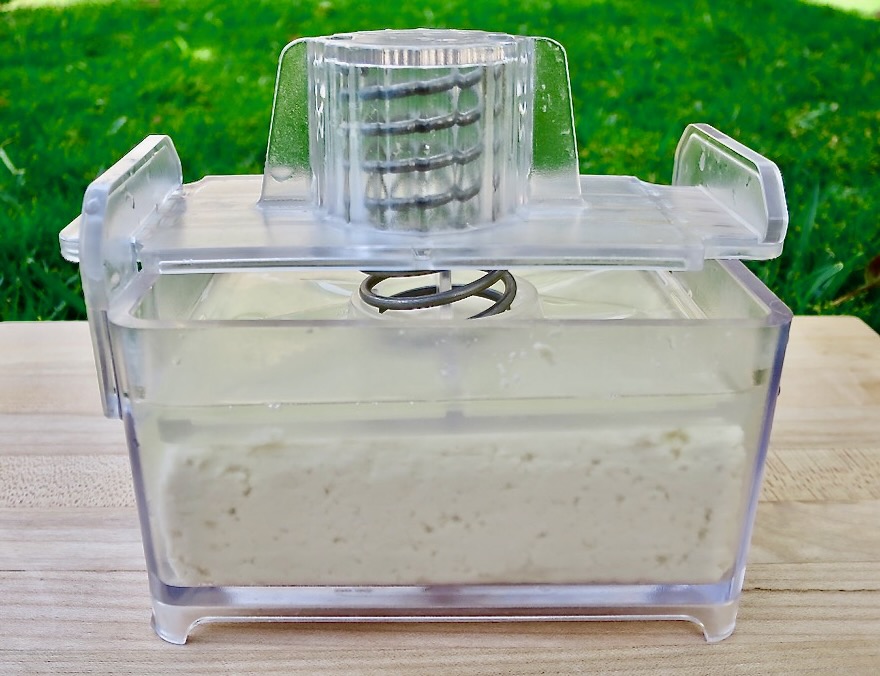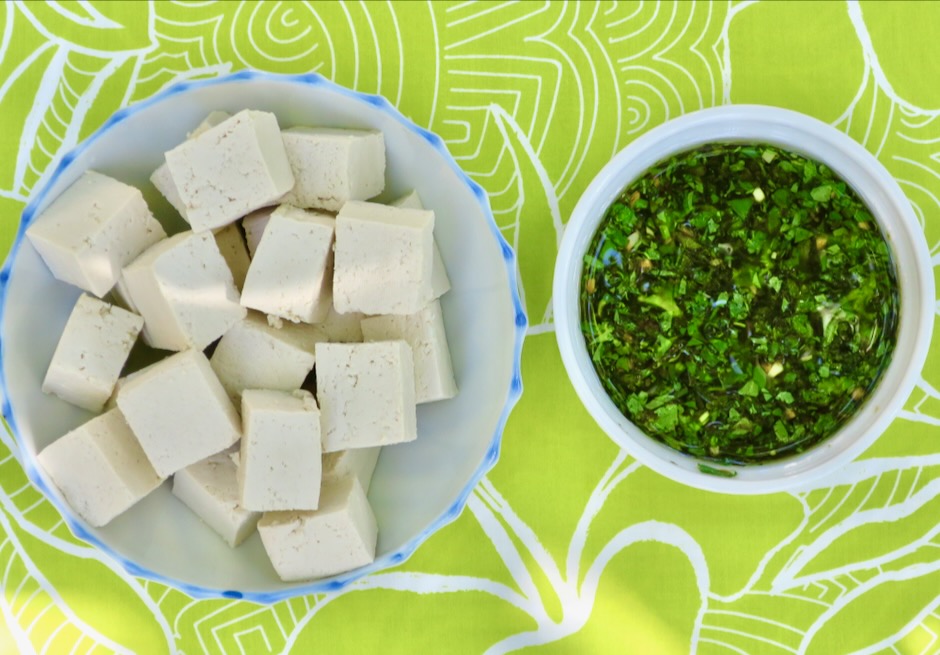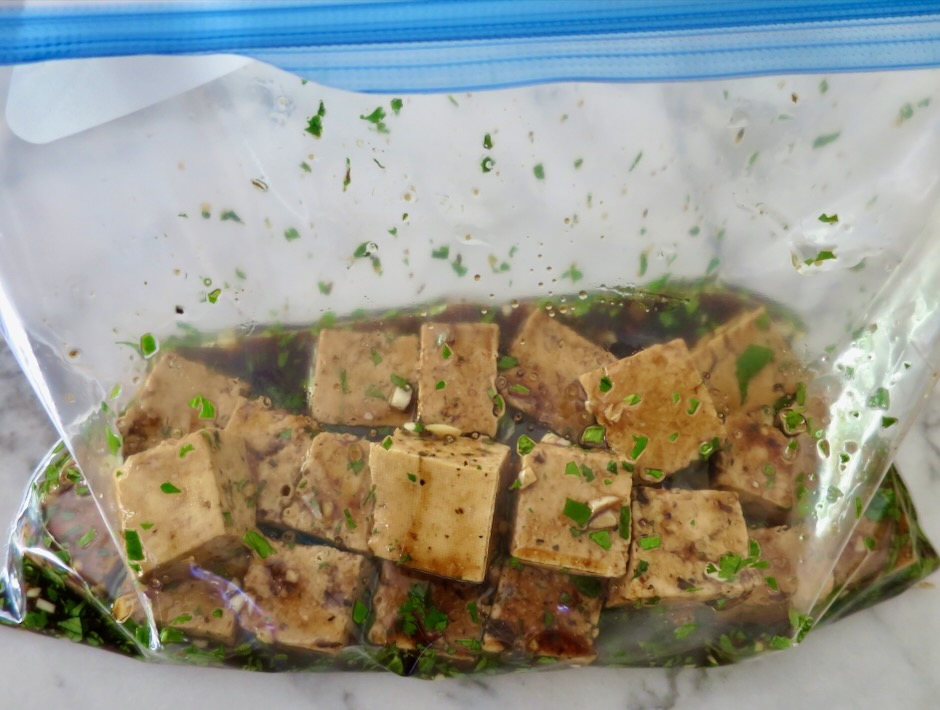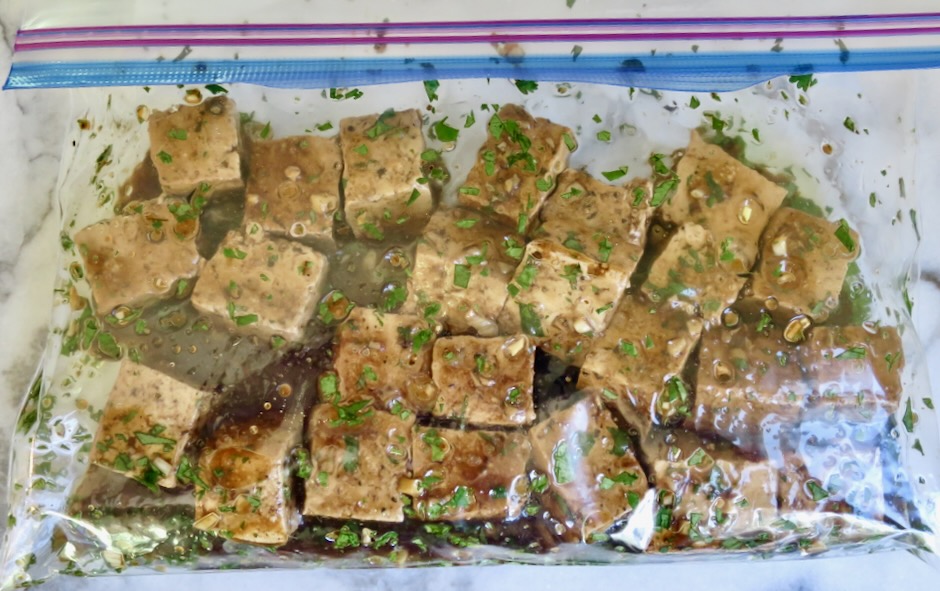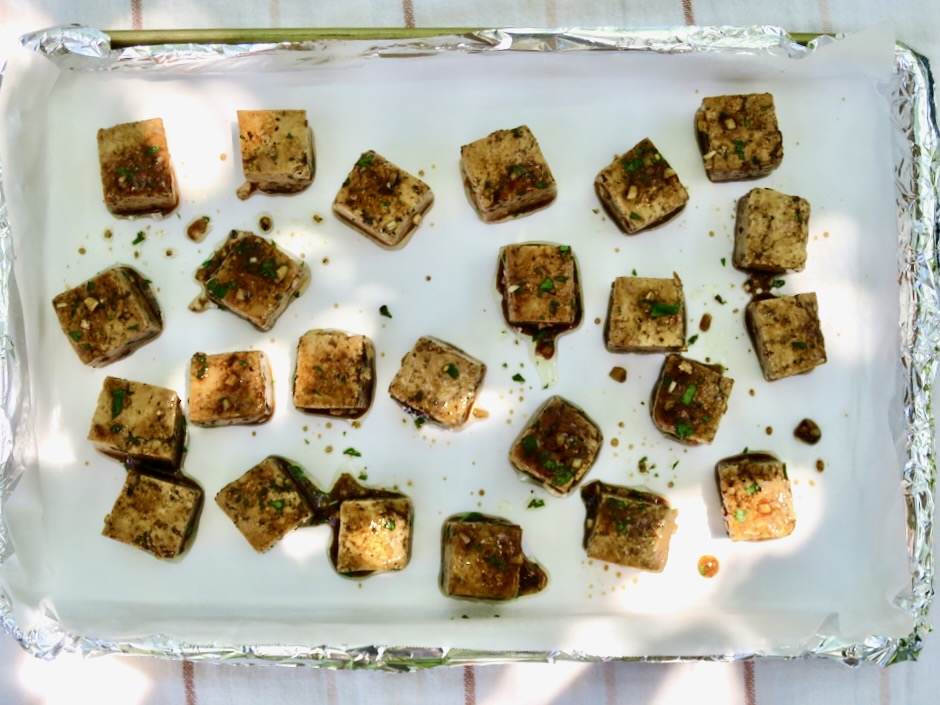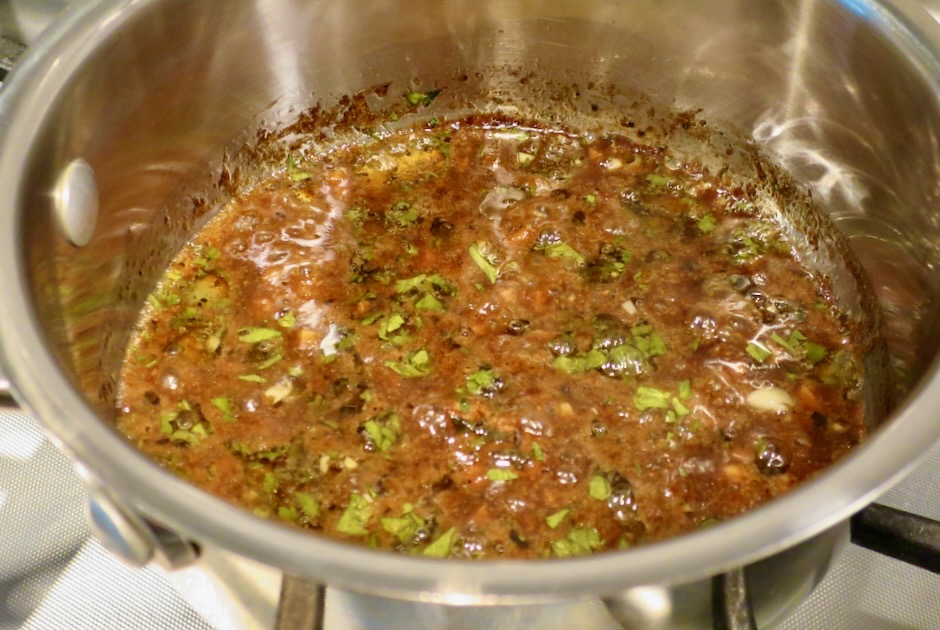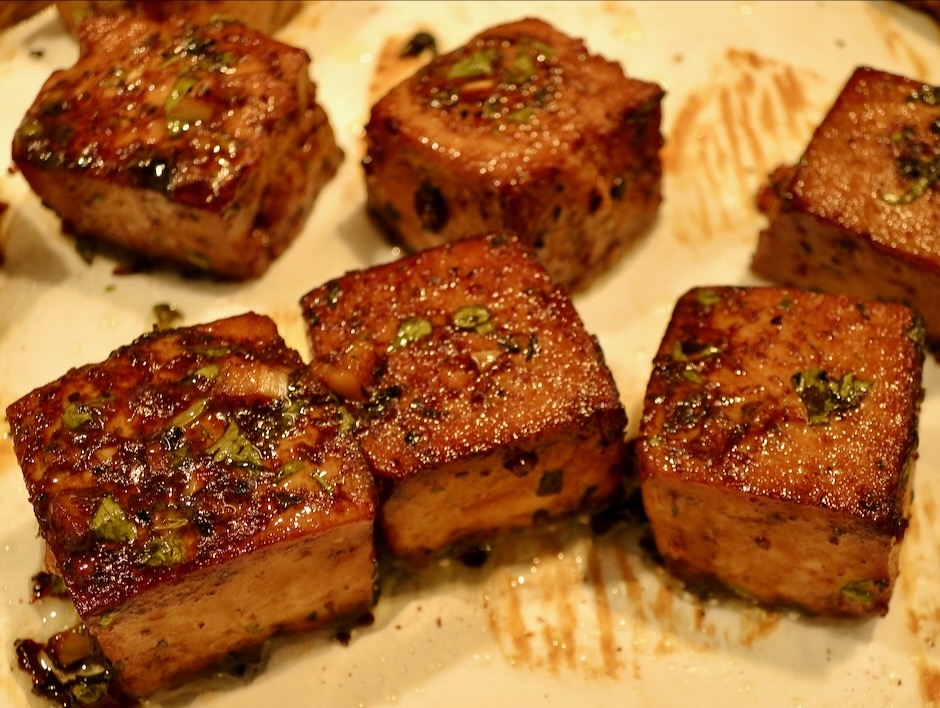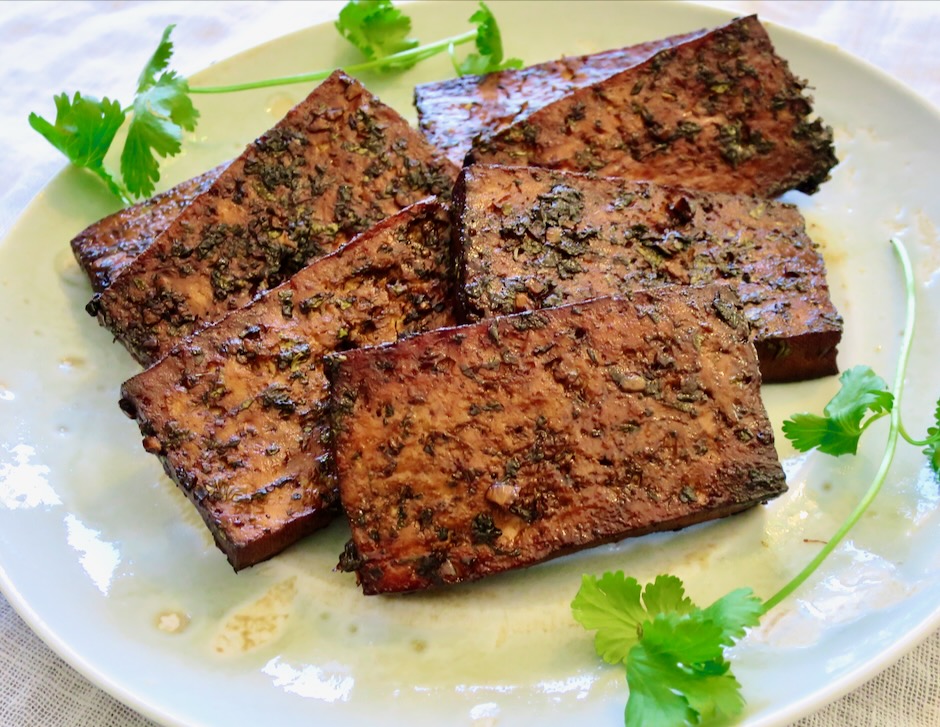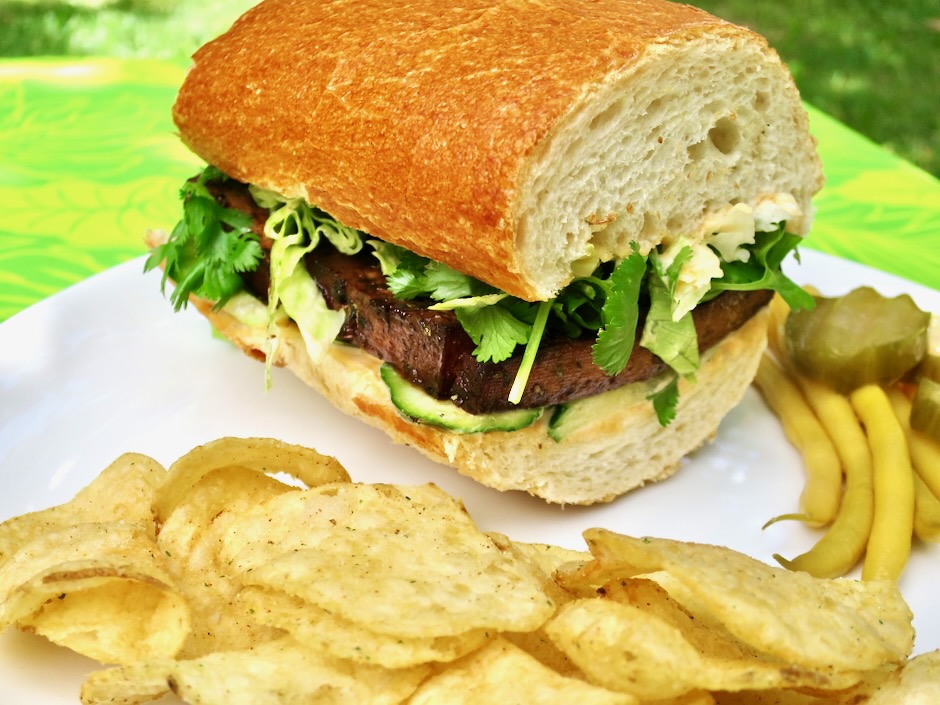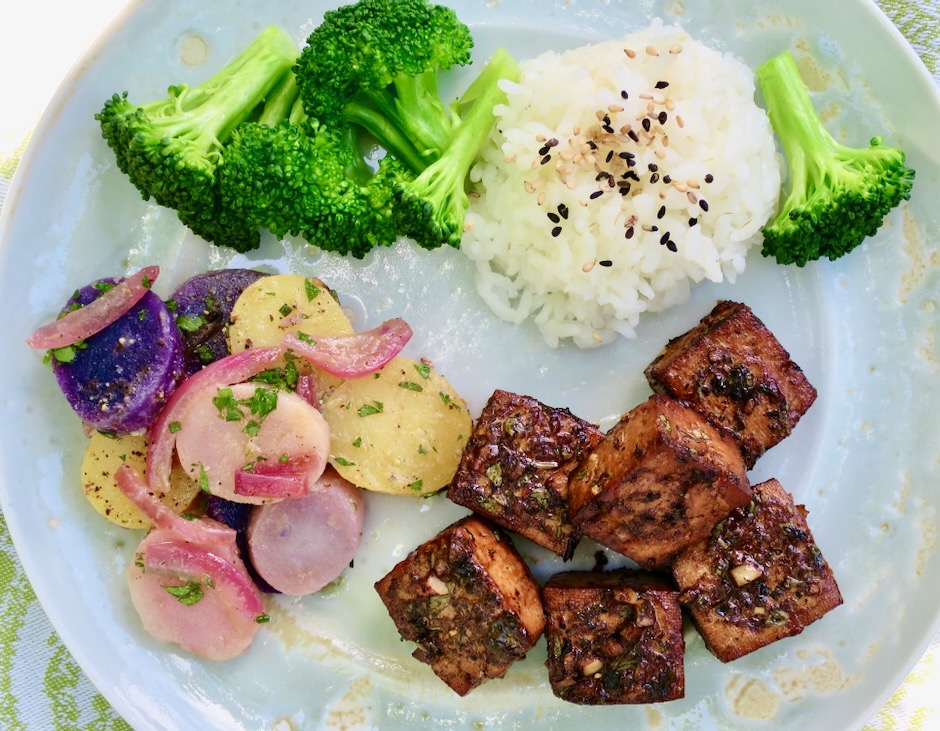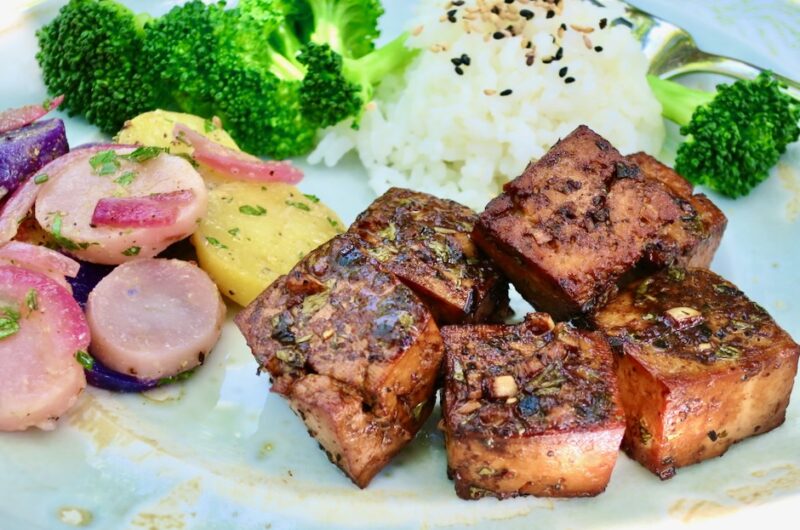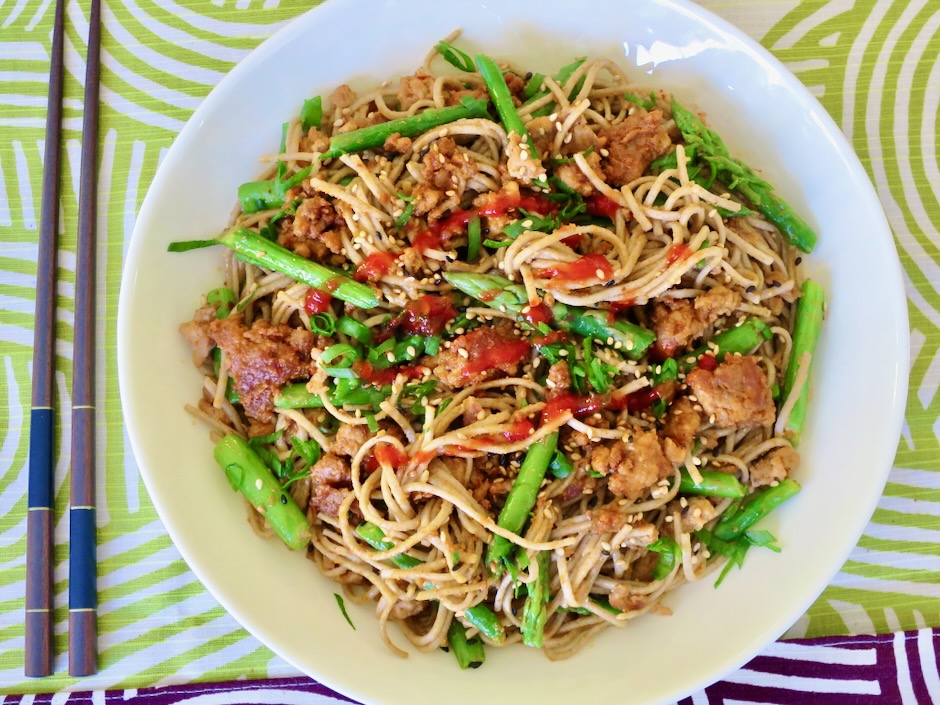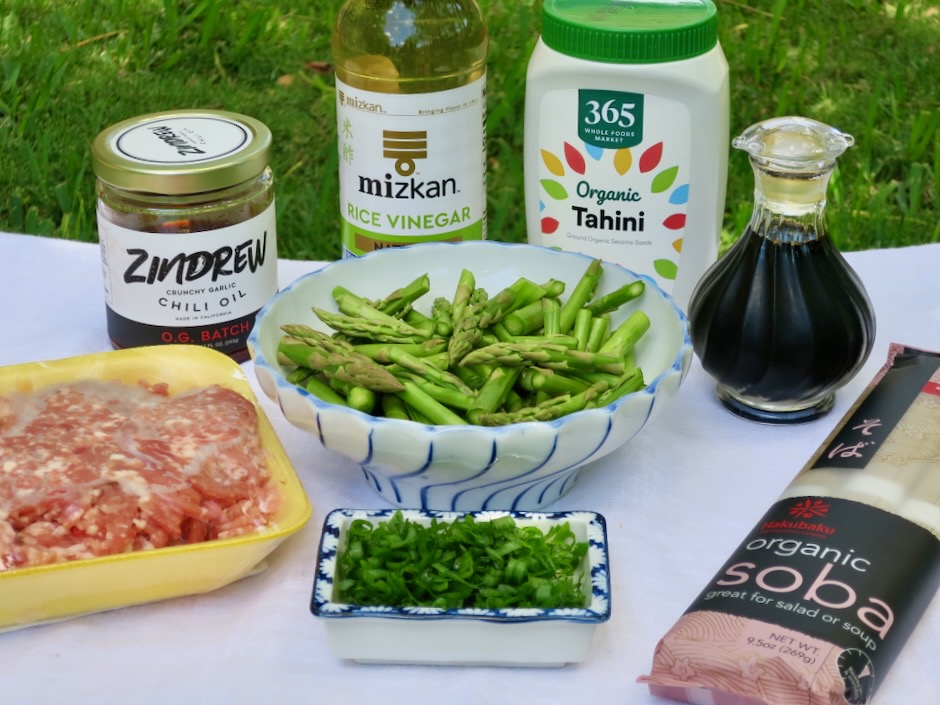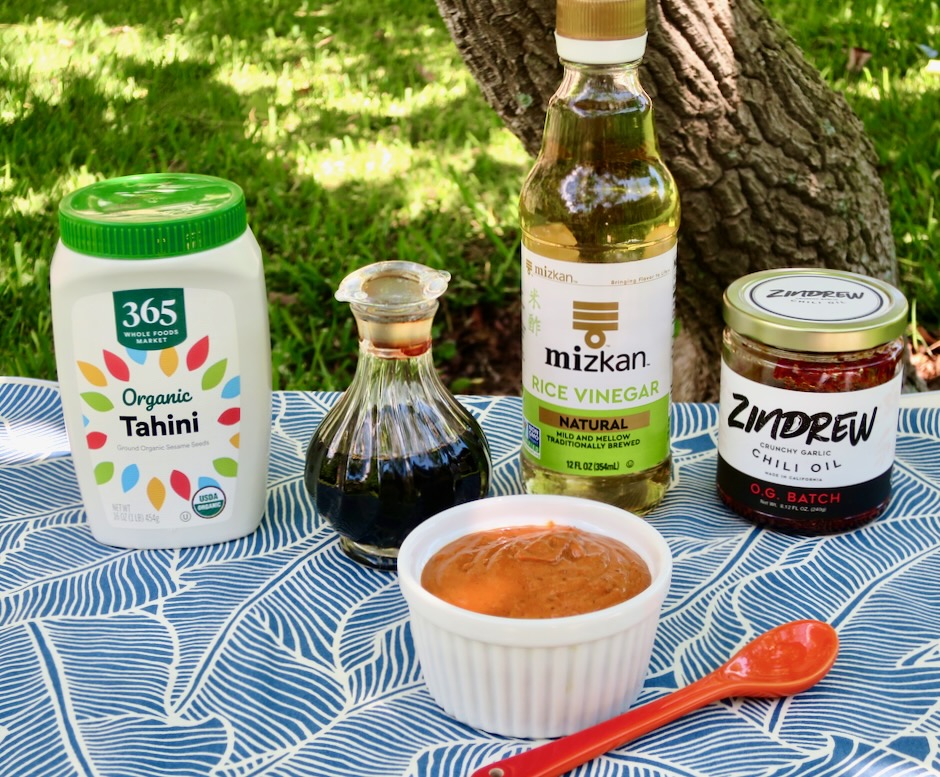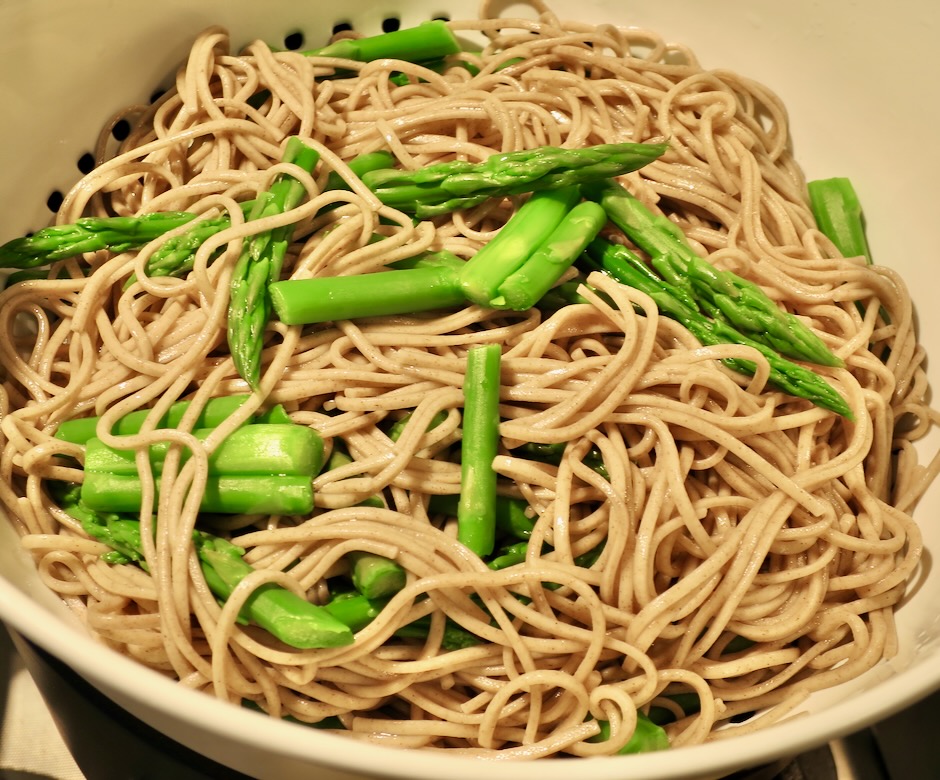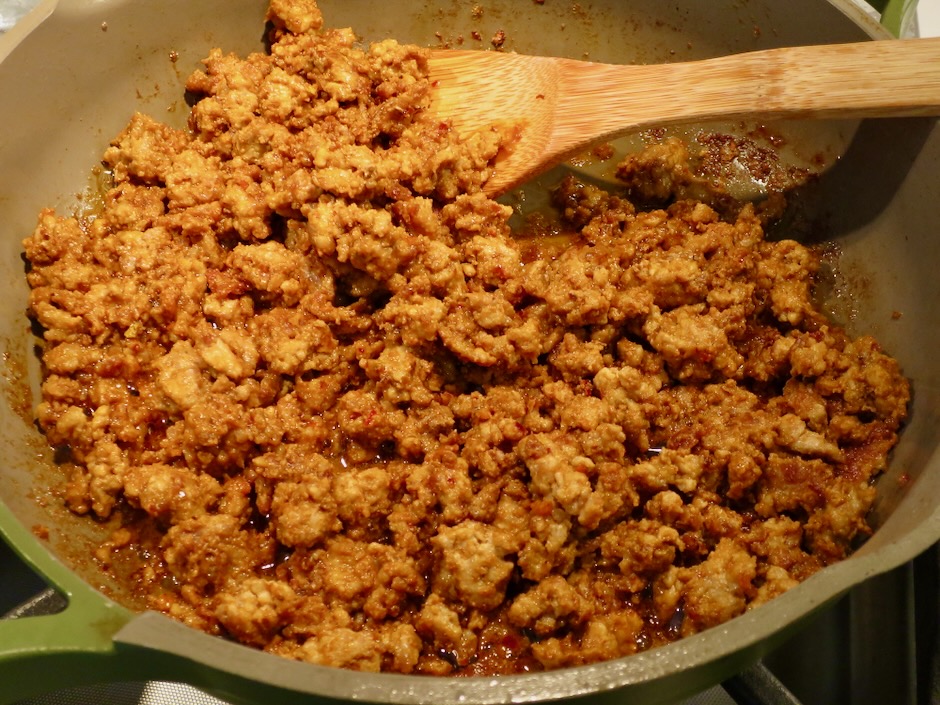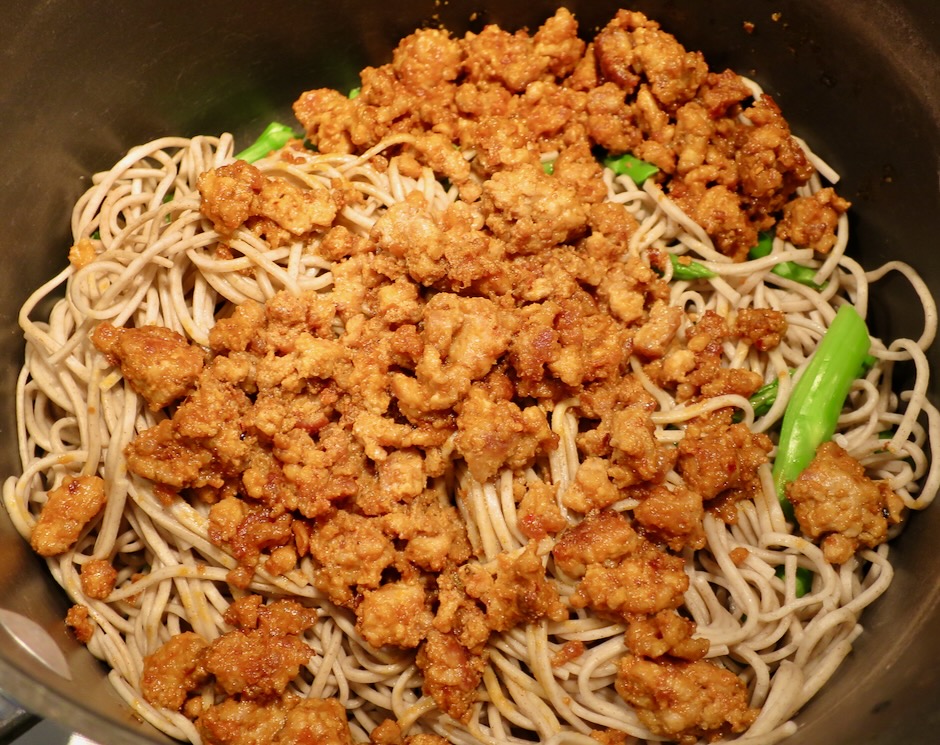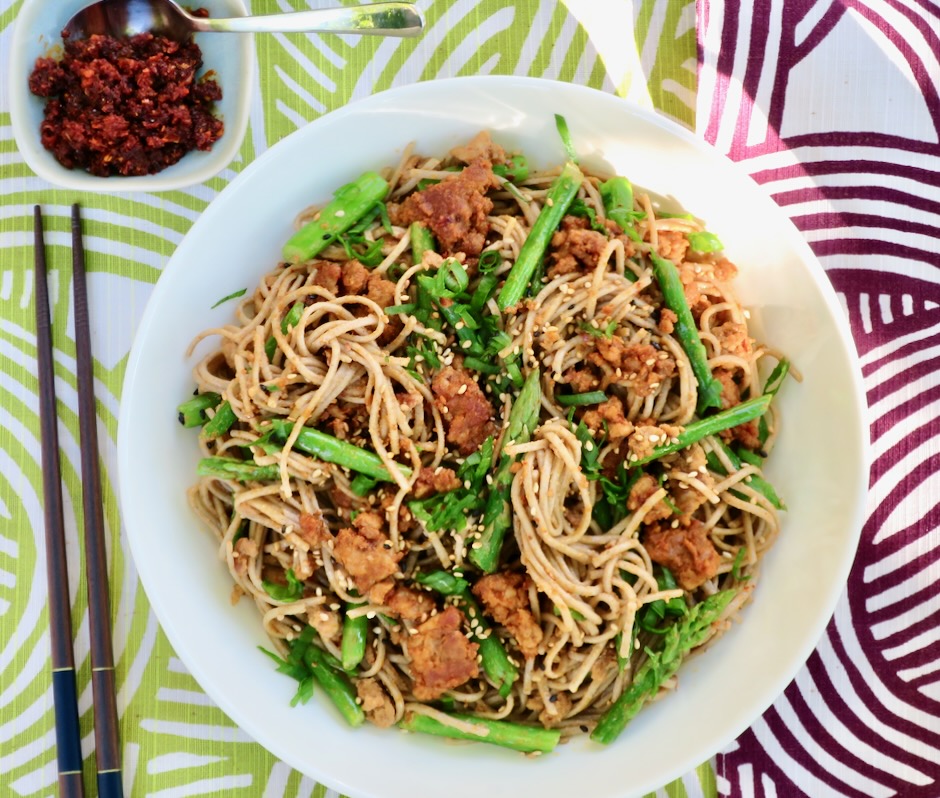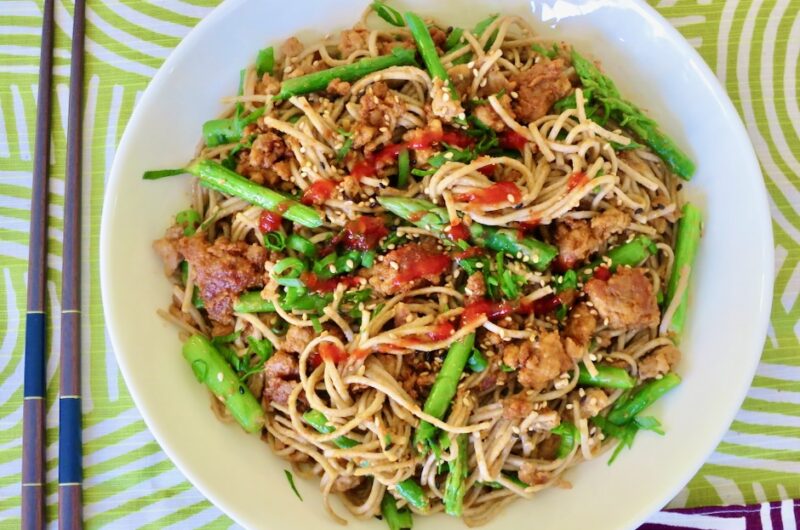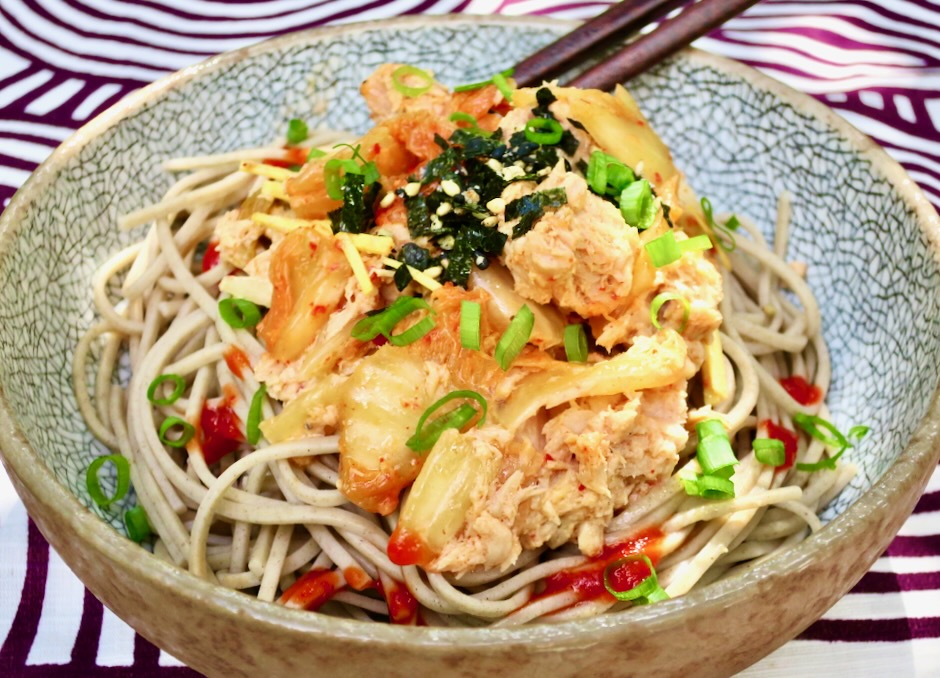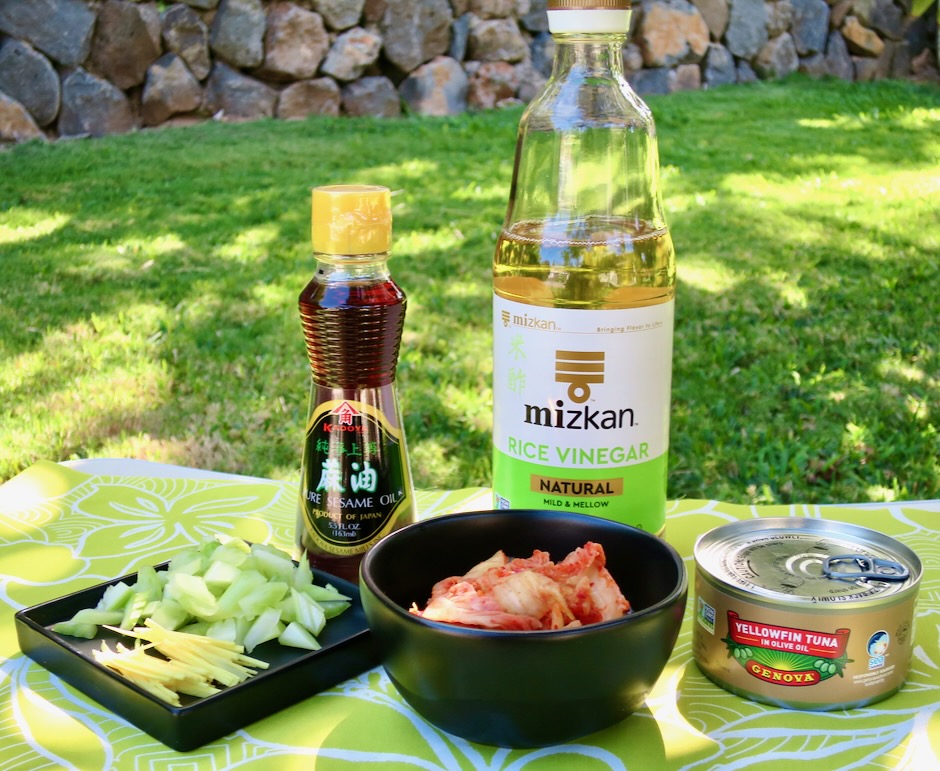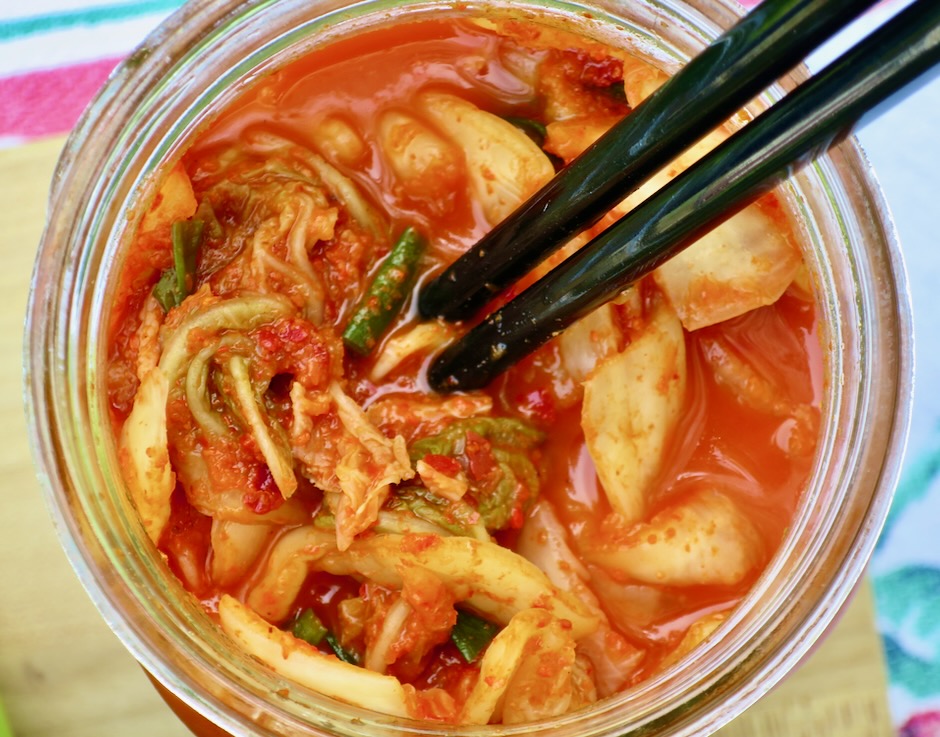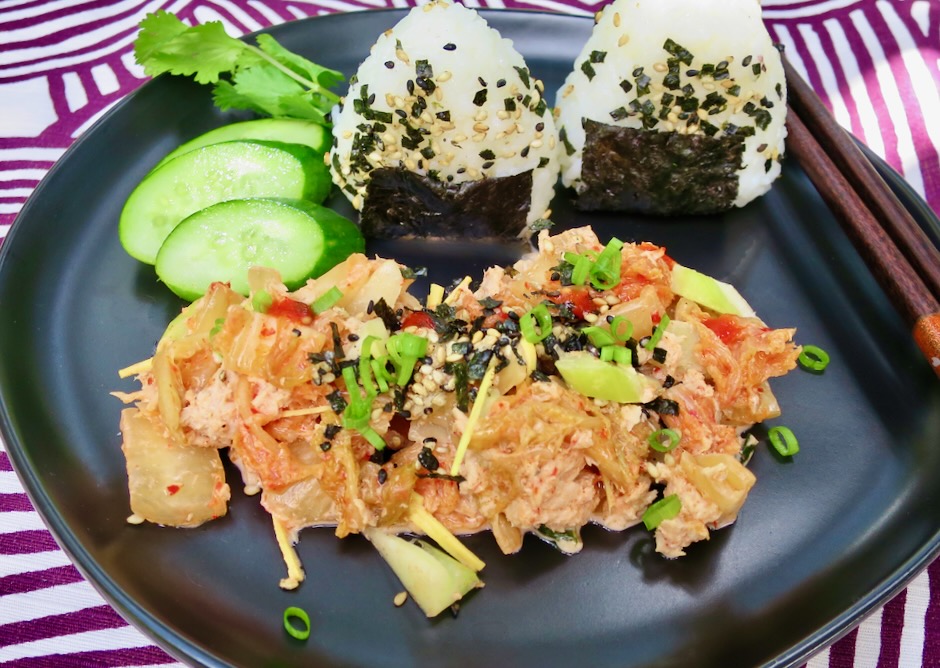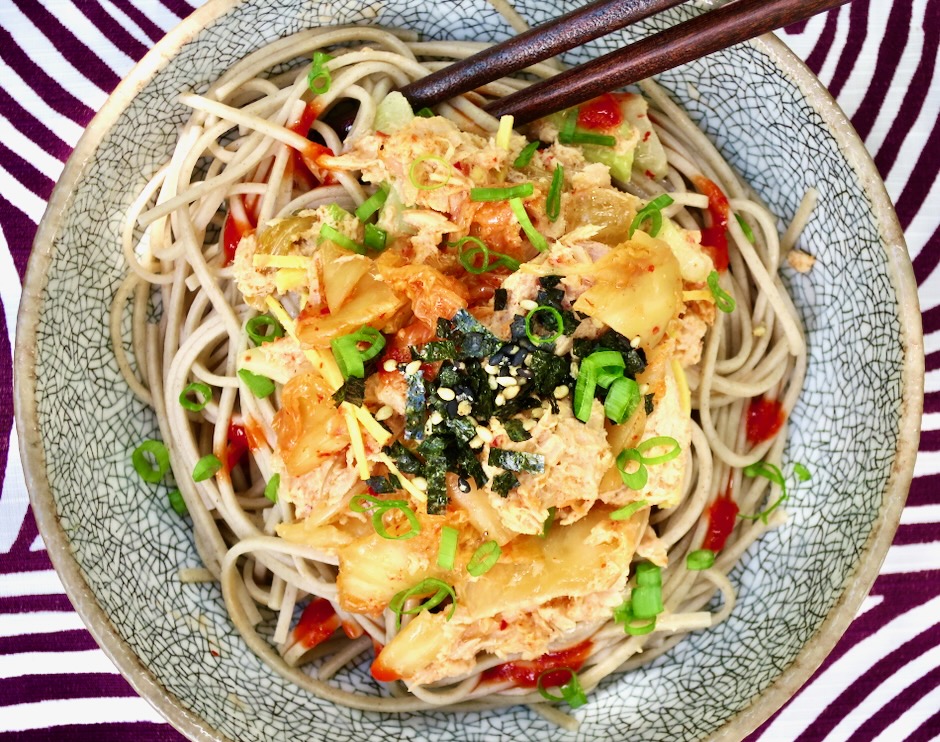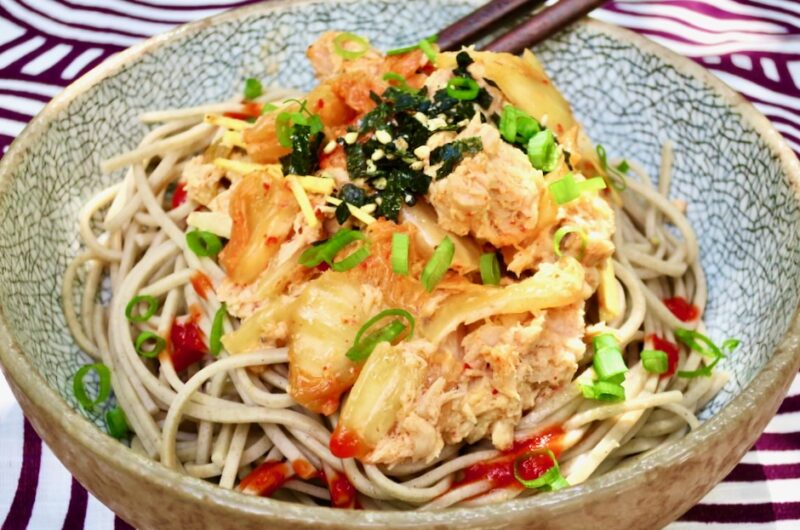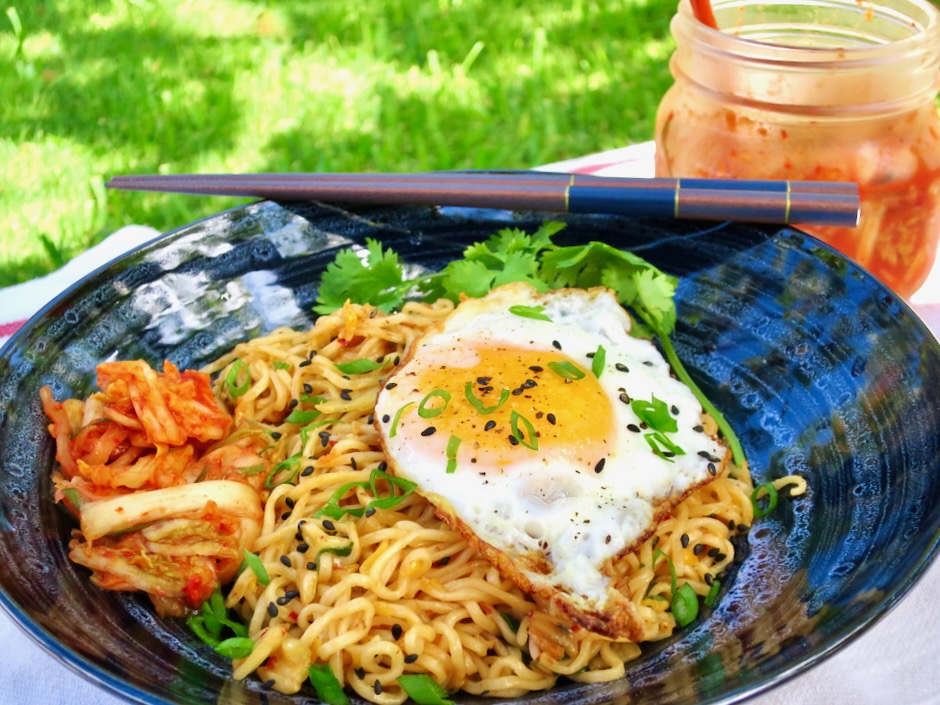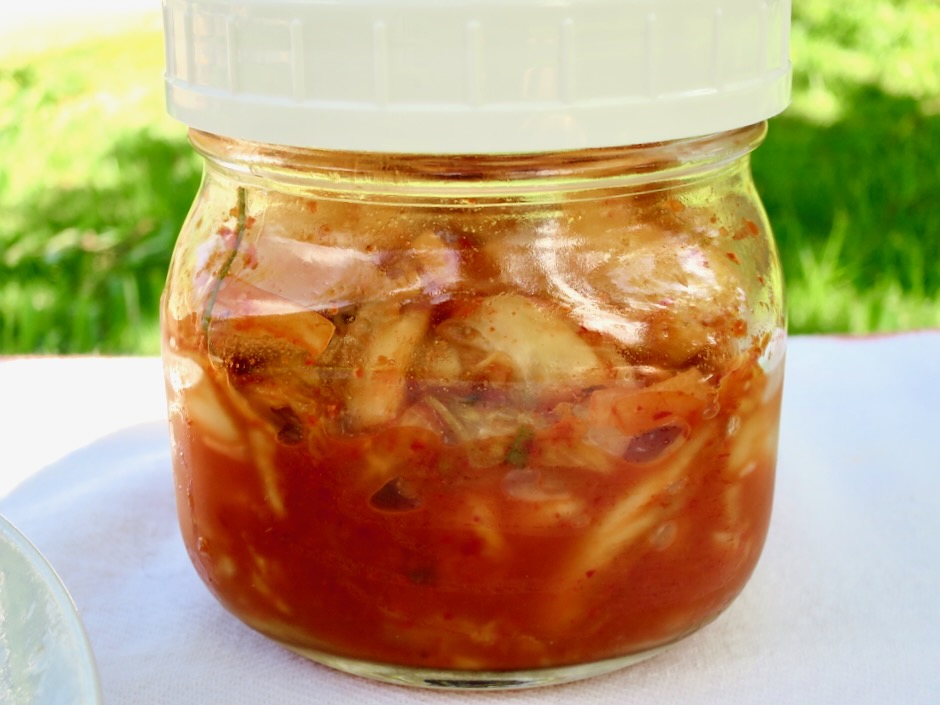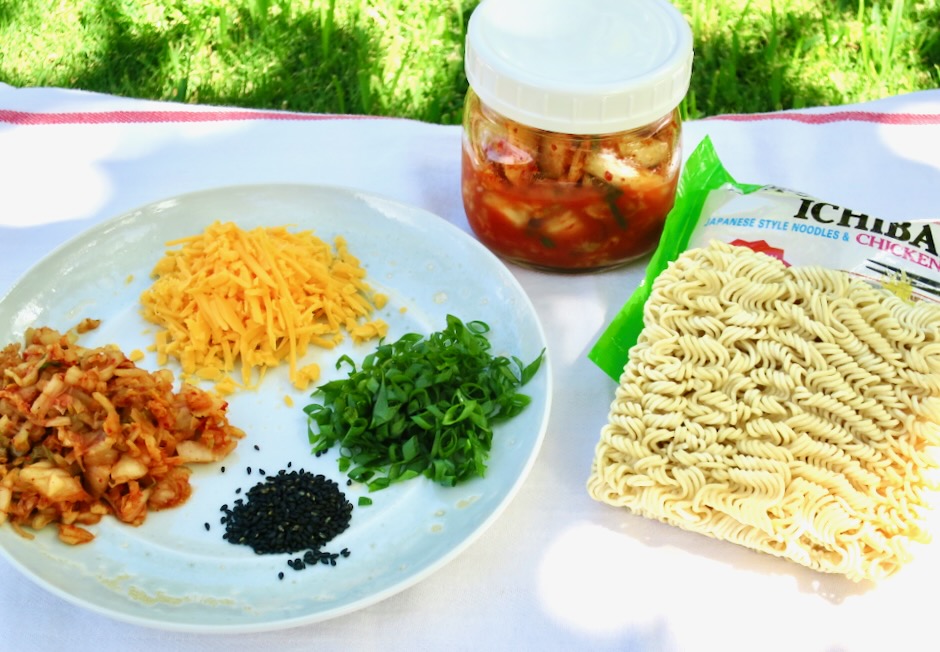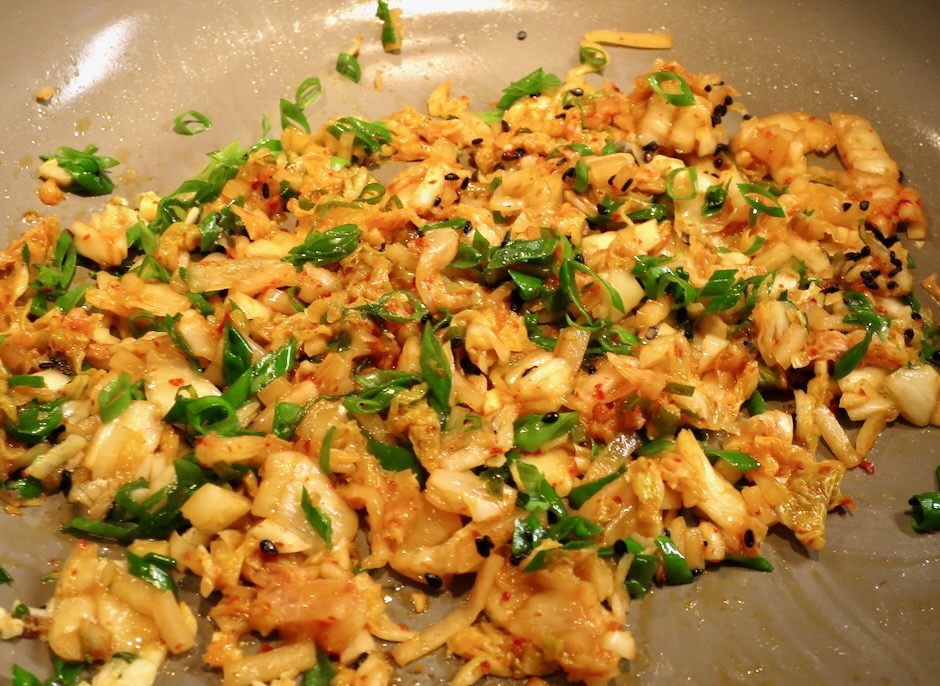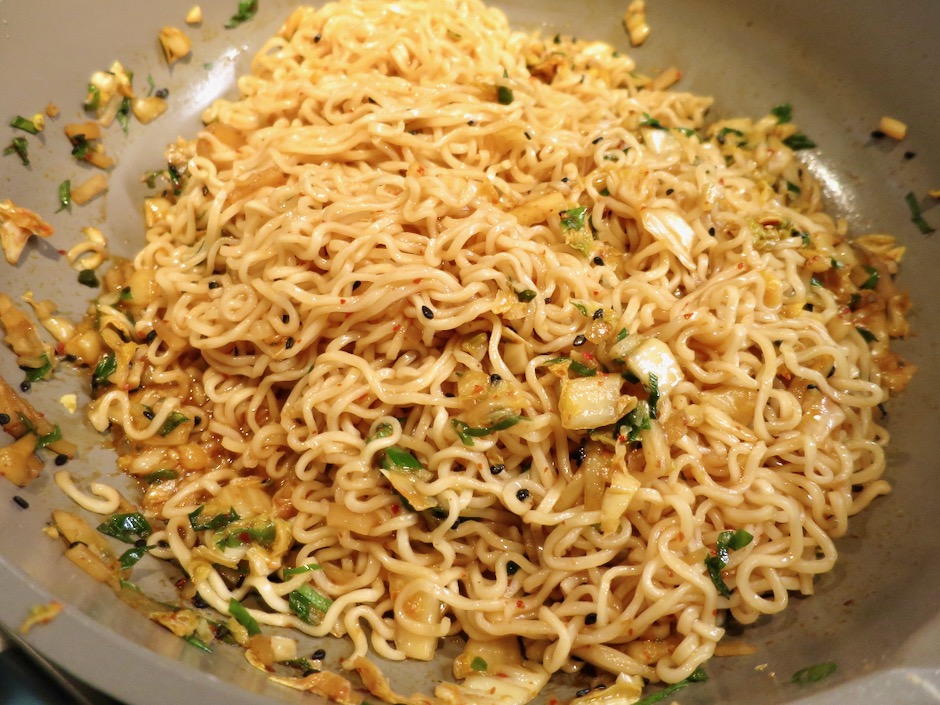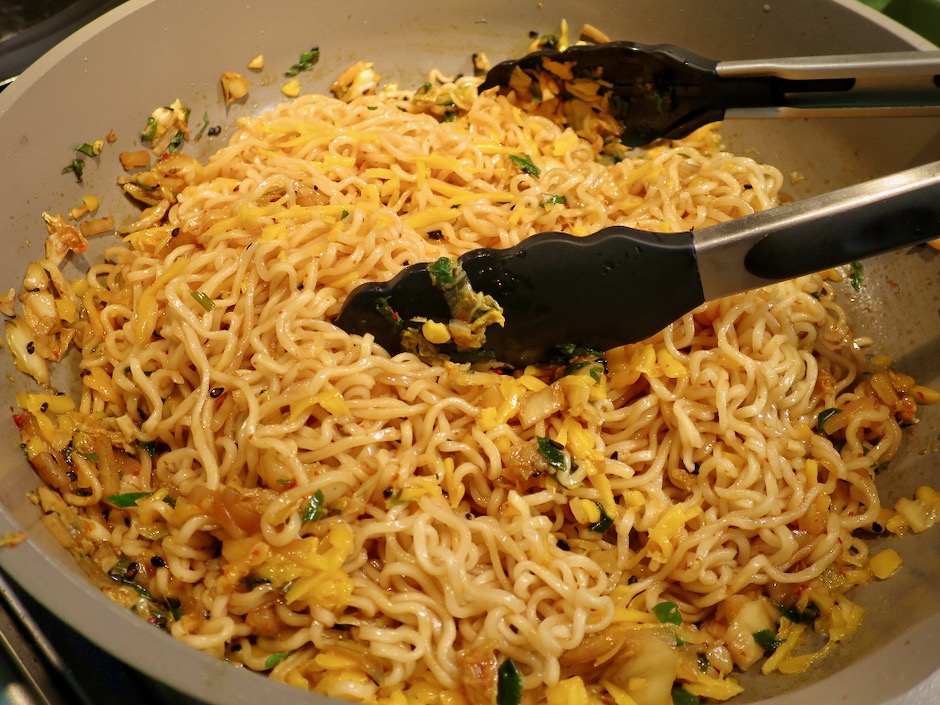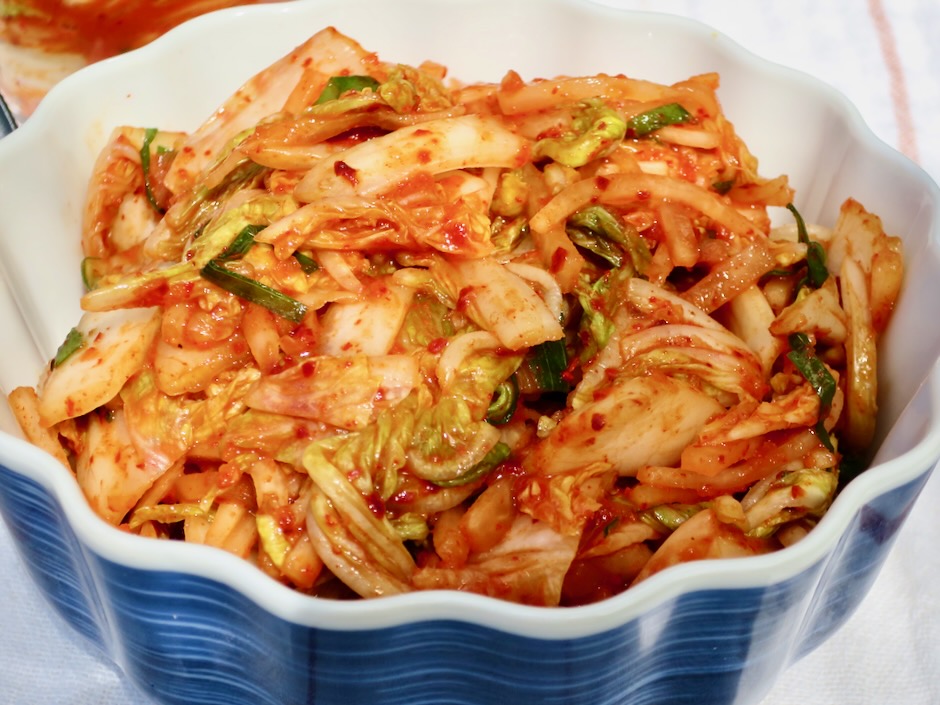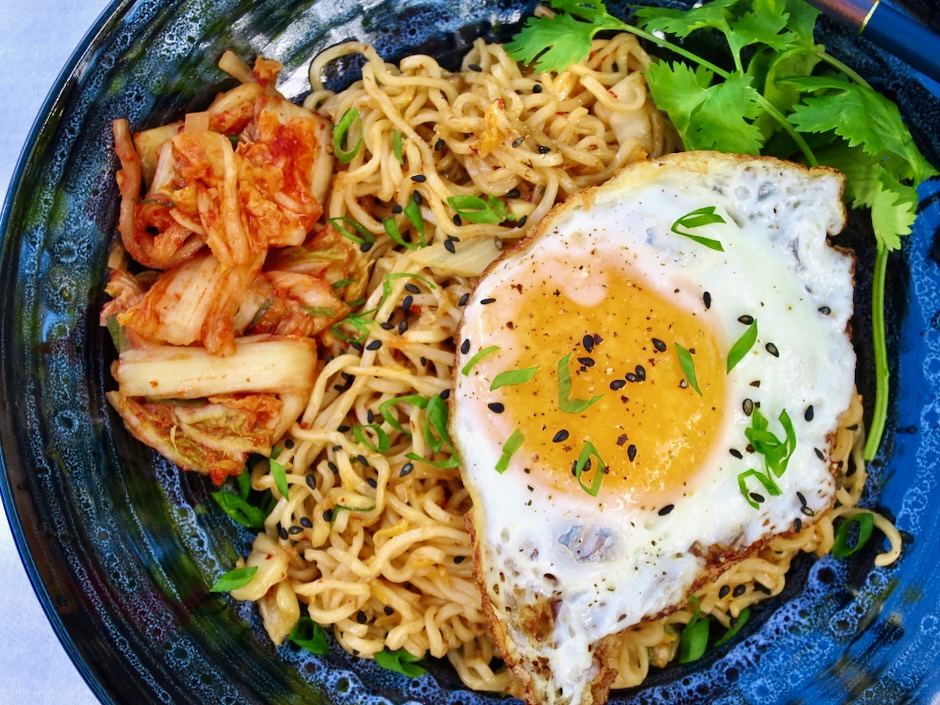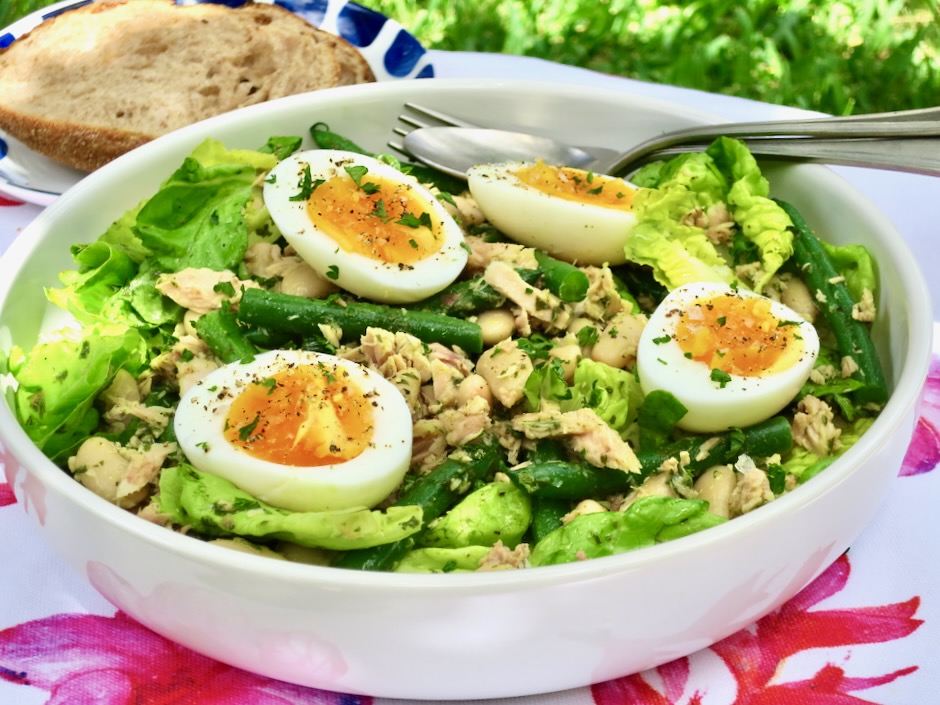
Good quality canned tuna is a tasty and versatile item to keep on hand. I like to stock a variety of canned tunas such as Wild Planet tuna in water which I use for sandwiches and for mixing with sriracha mayonnaise for maki sushi rolls. You will also find in my cupboard several brands of tuna in olive oil such as Ortiz and the reasonably priced Genova I found at Costco. You can whip up a tasty meal with little more than a can of tuna. This delicious salad incorporates white and green beans plus a flavorful basil dressing that brings the salad together.
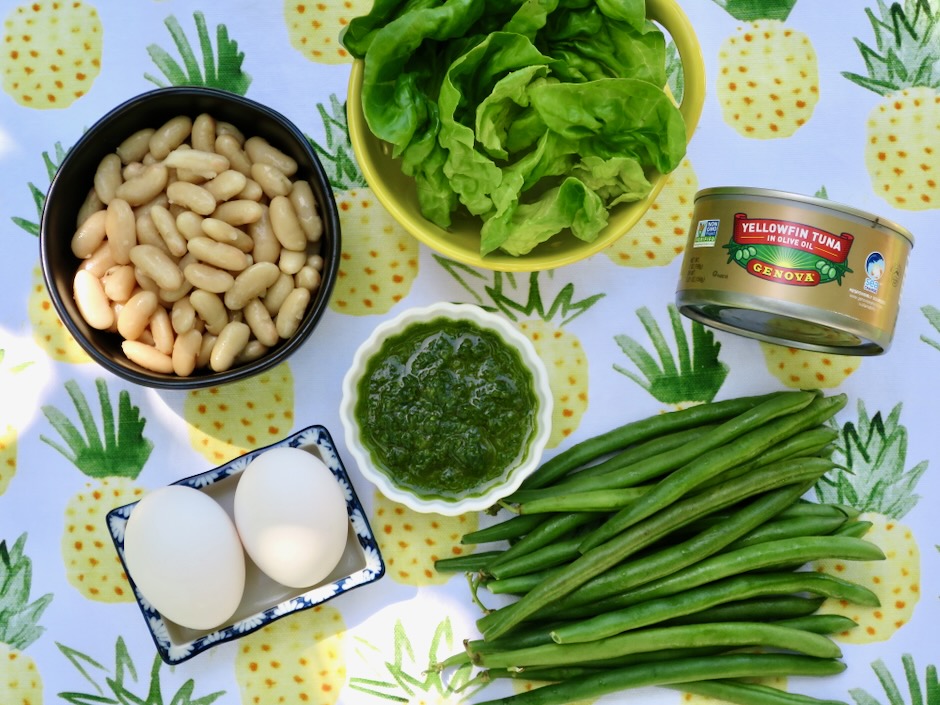
I had some dried cannellini beans in the cupboard which I pressure cooked for this salad. Canned white beans work just as well and will save you an extra step.
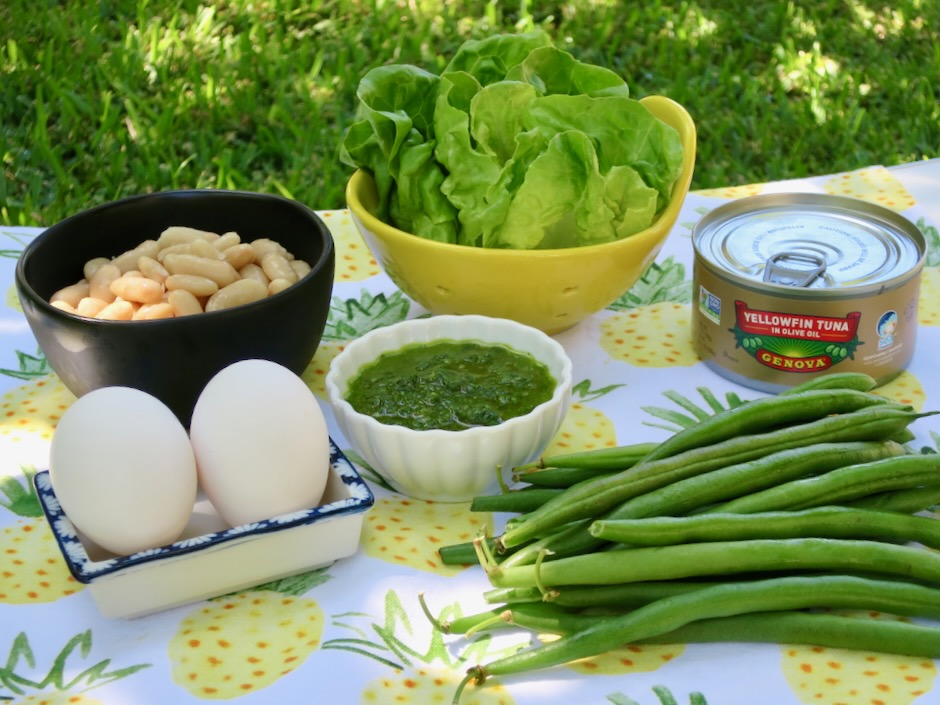
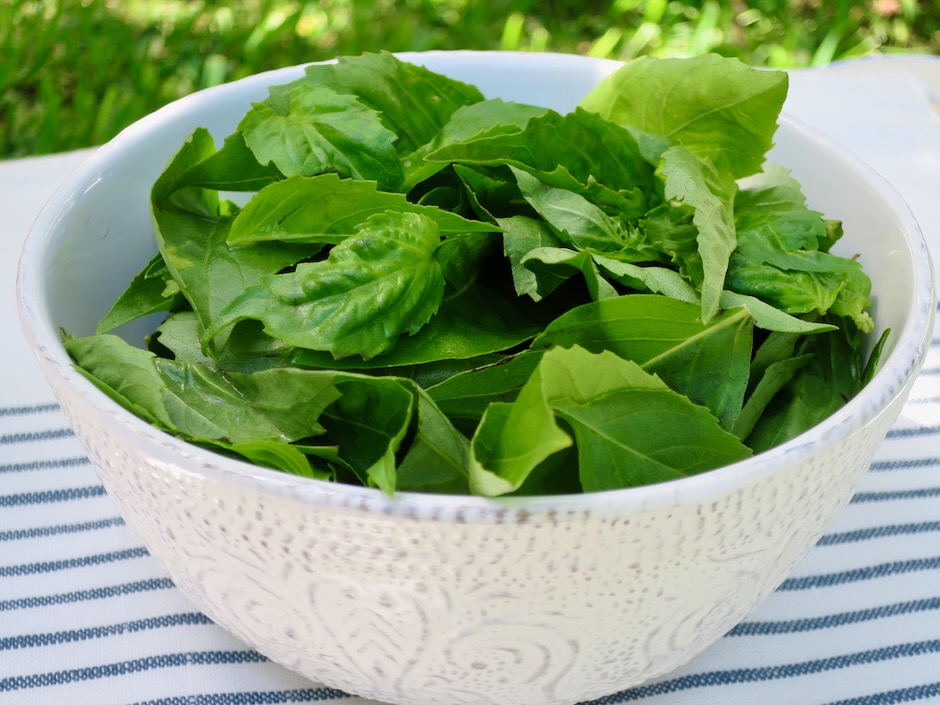
The basil dressing is tart and herby. It goes perfectly with the tuna and bean salad.
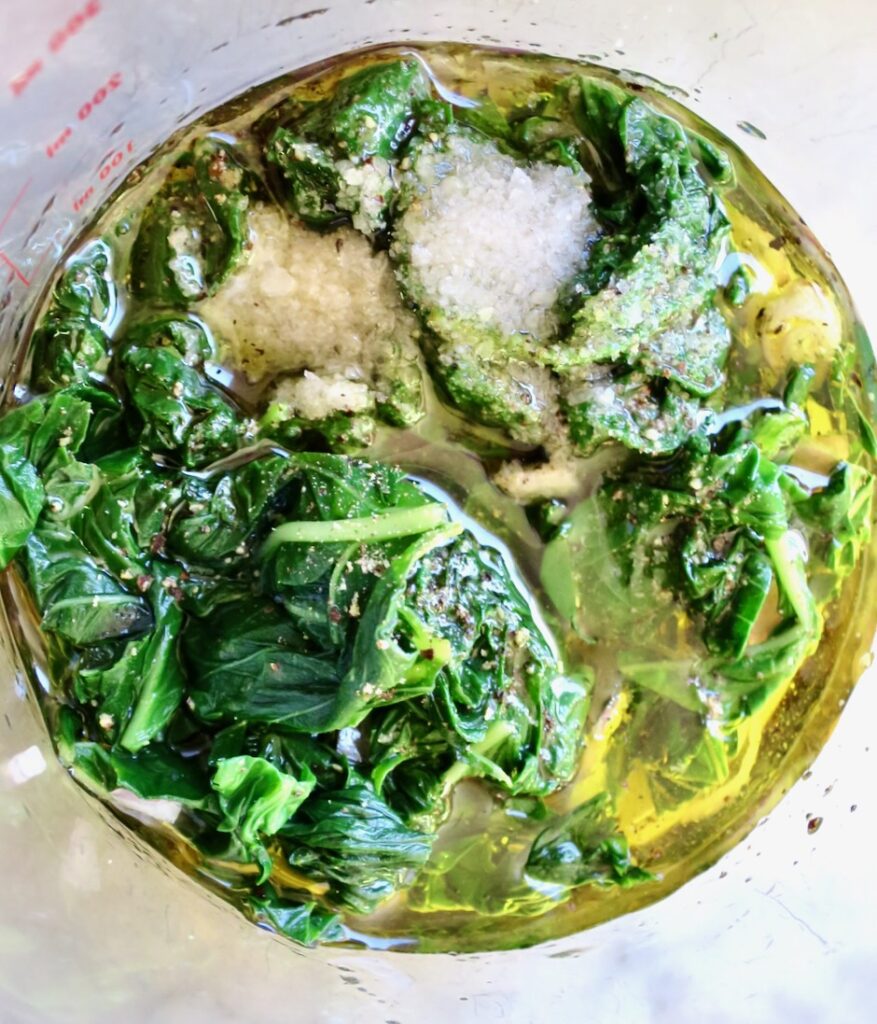
The dressing ingredients can be pureed in a small blender, food processor or with an immersion blender.
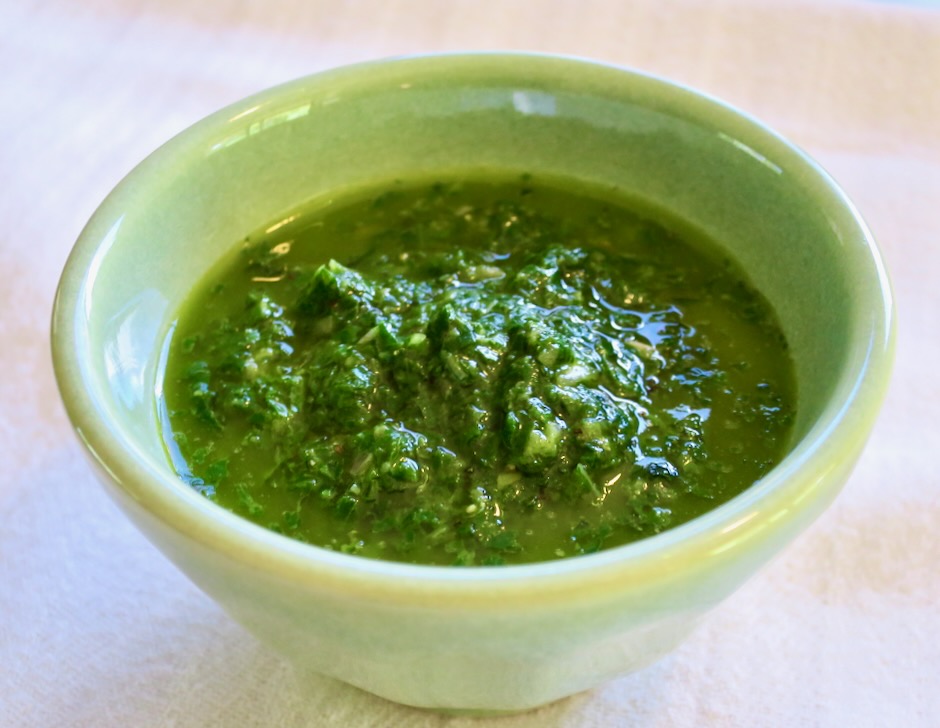
When I make pesto, I blanch the basil for a few seconds then cool in an ice bath. This ensures the basil pesto will remain a gorgeous green color. I did the same for this recipe, however, feel free to skip this step. The one thing I have learned is that vinegar will eventually cause the dressing to turn a drab green color. Though the taste is not affected by this change, the dressing is so much more vibrant when used sooner than later.
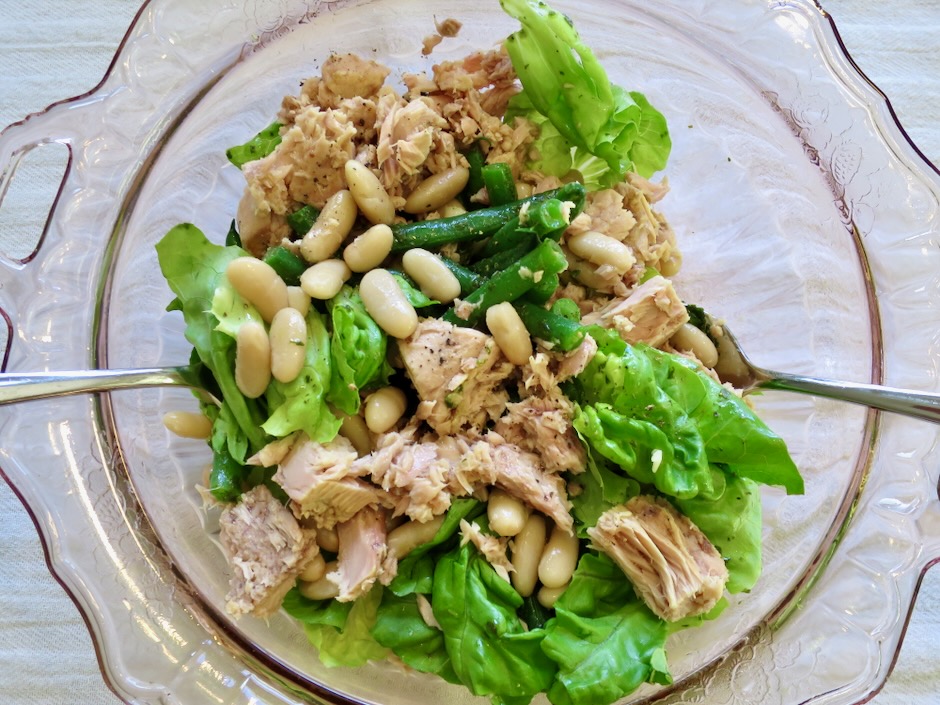
All the salad ingredients get tossed in a bowl before being served with perfectly cooked jammy eggs over the top.
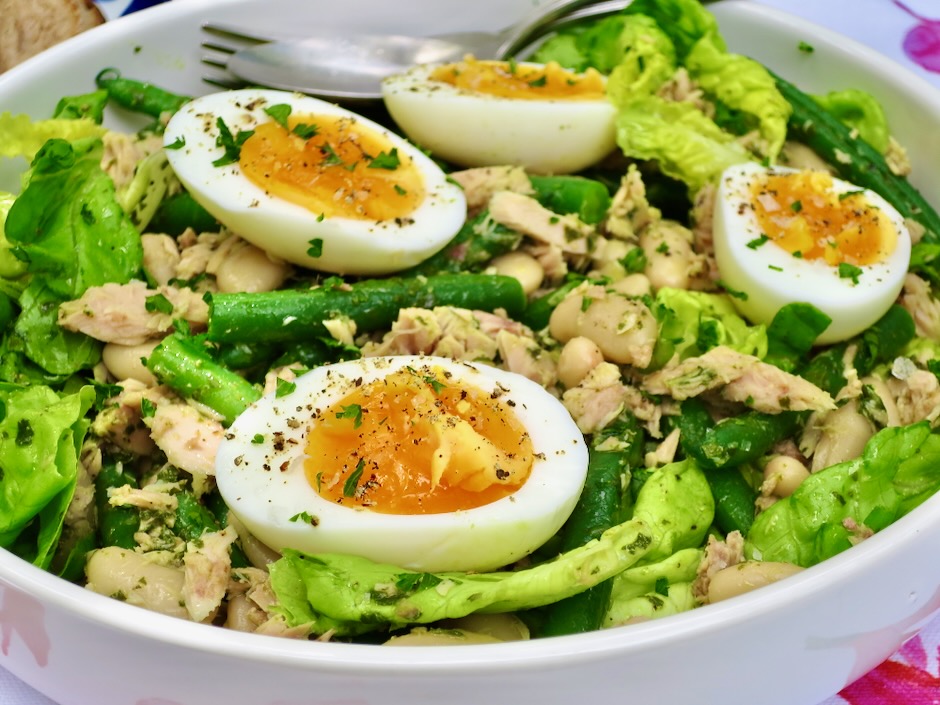
Adapted from Women’s Day magazine
Ingredients
12 ounces green beans, trimmed and halved
1 (15 oz) can cannellini or small white beans, rinsed (or cooked dried white beans)
2 cans (5 oz) tuna in olive oil, flaked into large pieces (transfer tuna to a bowl then flake apart)
4 cups torn butter lettuce or other tender lettuce leaves
4 soft boiled eggs
2 cups lightly packed basil leaves
1 tablespoon chopped shallot
1/4 cup extra virgin olive oil
1 tablespoon + 1 teaspoon red wine vinegar
1/2 teaspoon kosher salt
1/4 teaspoon freshly ground black pepper
Directions
- Bring a large pot of salted water to a boil. Add green beans and cook until just tender, about 4 minutes. Drain and transfer to an ice bath to stop the cooking. Drain and pat dry with kitchen towel.
- Drain and rinse beans in a colander. Set aside.
- Blanch basil in boiling water for 5 seconds. Drain and transfer to an ice bath. Squeeze out water from basil leaves. Place in an immersion blender container, small food processor or blender. You may skip this step and place fresh basil leaves in blender container, food processor or blender. Puree the basil with the chopped shallot, vinegar, olive oil, salt and pepper until combined. Taste and adjust seasoning as needed. Transfer to a small container and store in the refrigerator if not using right away. It is best to make the dressing the day you serve the salad to avoid it turning color.
- Transfer half of the dressing to a large bowl and toss with green beans. Fold in the torn lettuce, white beans and tuna. Toss gently with the remainder of the dressing. Taste and add more salt and pepper as needed. Serve with soft boiled eggs over the top seasoned with flaky sea salt and freshly ground black pepper.
Notes
- To make soft boiled eggs bring a medium pot of water to a full boil. Gently place eggs into water using tongs. Once the water returns to a boil turn heat down to a bubbly simmer (medium to medium-low). Set the timer for 7 minutes. Transfer eggs to an ice bath to stop the cooking before peeling and serving. For a firmer yolk cool for 10 minutes.

